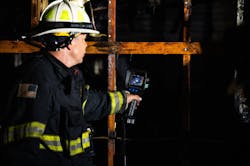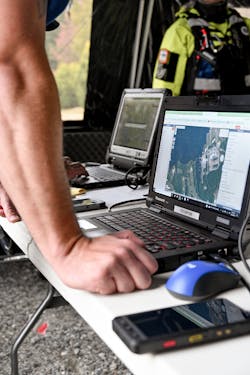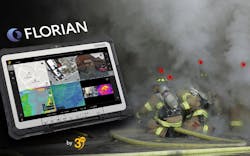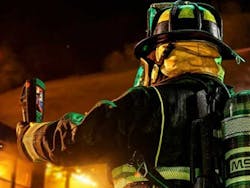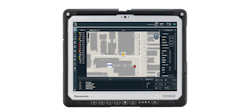Looking back over my career, the evolution of the fire service is something that quickened in the past decade. Even the most regressive departments can’t rely on “200 years of tradition, unimpeded by progress” to shield them from what’s happening.
The availability of data/technology to assist with the all-hazards fire and emergency services model is creating a major shift in how departments operate. Just looking at the technology innovations, things are far from my first experiences 23 years ago, when something as simple as a thermal imaging camera (TIC) was kept in the chief’s car because of the price.
With the hype that surrounds drones, artificial intelligence (AI), geographic information systems (GIS), biotelemetry, 3D tracking, augmented/virtual reality and other technological advancements, it can be difficult to separate the fad from facts to make a good decision. Ultimately, whatever choice that you make or recommend to the decision-makers comes with some risk, cost and potential liability; however, asking these five simple questions when you select and implement your solution helps to ensure success.
1. What are you trying to solve or make better?
The biggest mistake in implementing any innovation is to do it because others are. When you define the problem, it’s important to understand whether the implementation is innovation for innovation’s sake or is something that truly serves the mission, community and firefighters.
In an age of social media videos, it’s easy to find inspiration for something to add to your department, but answering this first question adds direction to your innovation journey.
When serious issues in a department occur, such as a line-of-duty death (LODD) or a near miss, the problem that you try to solve is clear and apparent; however, when the status quo seems to be working, defining a problem can be difficult.
As a firefighter, what “does not work” is based on the daily struggles to accomplish particular tasks or duties. As you rise through the ranks, staying connected to those who deliver services is key, but data analysis of performance objectives is useful insight. Attending conferences and training events that convene outside of your region is another great way to find out about problems that you might not know. Even if things are working well, education can aid in avoiding complacency.
Furthermore, avoid correcting multiple symptoms of a major issue by employing root-cause problem-solving.
The work that you put in to determine the answer to this first question is a great exercise for officer development and strategic planning.
2. Does a technology align with your mission/core competencies?
This question boils down to “Is this a need, or is it a want?” In the absence of a strategic plan that guides the development of solutions, failing to ask this question easily can lead to mission creep and detract resources or attention from a primary function. I see this part of the process as the avoidance of “shiny new things” or “keeping up with the Joneses.” Just because the neighboring department started to use a new piece of technology or implemented a new service doesn’t mean that your department is ready or in need of that option. If the technology serves the mission, then you should evaluate further what other areas of your organization it could improve.
Posing this question also can be a great opportunity to see whether there are solutions that integrate or solve multiple issues throughout the entire organization or region. Understanding how the new technology, particularly software as a service (SaaS) and cloud-based applications, might interface with other systems might not solve a problem, but it could create great opportunities for a department to close communication loops and spread out implementation cost.
3. What is the cost?
This question is more than just about the effect of the implementation of the technology on the budget. Evaluation of the time and energy to train the affected personnel, of the disruption to other priorities or functions in the department, and even of the political cost from a public perception perspective are all considerations.
True cost extends well beyond the implementation period. Startup fees, particularly for SaaS improvements, often double the first-year cost.
Ongoing maintenance and subscriptions also are major considerations.
Further, for every solution, you must consider the opportunity cost—in other words, if you do this, what else would you not do? Answering this question helps to avoid major disappointments. Just because a solution can do or integrate with something doesn’t mean that it will do that without a lengthy and sometimes expensive development period.
4. What are the results if the solution works?
Assuming that your selected technology solution works as advertised—which it never will 100 percent of the time—how will it affect the operation, tasks or performance of the department?
If you provide baseline metrics of your current state or issues, what estimates can you provide on how much better things will be after you adopt the innovation or technology?
Although you can get some of this information directly from the various companies that design solutions, it’s best to get a list of customers from those suppliers and do your homework. Remember, though, just like a request for references from a job applicant, when you ask a supplier for references, it will load up with positive-feedback providers. Your scrutiny of the customers that the supplier provides in regard to similar size, scope and location and then inquiring based on those similarities really can aid in your evaluation.
5. What are the results if the solution fails?
Knowing that every single product or service that’s on the market has some failure point is a huge reason why departments often are risk-averse and choose to keep doing things the way that they always have. Murphy’s law is a constant factor in decision-making, whether operating on scene or making an innovation decision. That said, don’t delay a good solution by waiting for the perfect solution. In other words, avoid analysis paralysis. If a solution is good but not perfect, establish the expectations with everyone who is involved and create a feedback system by which issues can be addressed.
Reliance on technology is a realistic problem for emergency services. However, functioning when conditions are normal, such as stable Wi-Fi, isn’t guaranteed. Therefore, you must evaluate the resilience of your solution. Battery backup, offline capabilities, failure warnings and redundancies are all ways to make your solution more robust and effective. That said, should your solution outright fail, will it put the public and/or responders at risk? This question also addresses service after the sale and warranties. Even the most battle-tested piece of technology will be damaged by the average firefighter. Preestablishing the expectation or plan to fix or replace your solution is absolutely necessary.
Putting it all together
There are two specific implementations to review to help to elaborate how we reached the outcome in my department. Individualized TICs and online incident management accountability are two projects that my department reviewed. We adopted one of them; the other was postponed until it met the expectation.
The individualized TIC project was one of many options that we evaluated as we were replacing our outdated SCBA and TICs. Looking at the various options that were on the market, we obtained demonstration products to run through recruit training and live-fire drills. The pricing of these options made it possible to give everyone the ability to have this situational awareness tool available. It was an enhancement of the current core mission, meant to capitalize on the initial problem of outdated equipment. We had the buy-in and capability to make the investment. If it worked, 34 operational TICs were on a fire scene. Even if some failed, there would be more than what we currently had on scene. We established expectations of time saved when completing a search, and the result for our department was two verified saves that related directly to having this technology.
Our second solution developed as we started the discussions of how every department in the county used a different accountability system. The problem was outdated/incompatible accountability systems that historically are listed as a contributing factor for LODDs. The fiscal cost of using an online incident management system was a major factor; our department was the only one in the county that had the resources to afford the necessary equipment. The firefighters hadn’t been prepared to adopt the new technology, and at the time, the options that we considered didn’t have the redundancy that we wanted. Most of those issues have been resolved, but for us, the time wasn’t right.
Identifying solutions
The availability of technology and innovation for the fire service is greater than it ever was. The limitations and failures that prevented mainstream use are being resolved quickly, including the incorporation of redundancies and affordability. By answering the five aforementioned questions, it’s possible to find a solution that’s right for your department and to capitalize on the emerging technology that’s meant to improve firefighters’ safety and the decision-making processes.
Product Highlights
IC & Accountability
FLORIAN automated incident command software and accountability platform streamlines on-site processes, enhances situational awareness and reliably tracks personnel. It consolidates a comprehensive set of critical insights, including location data, responder tracking information and essential communications into one user-friendly interface. It can be adapted to meet specific requirements and works across various devices and platforms.
Search & Rescue Tool
The LUNAR Connected Device, which is a handheld, wireless personal accountability device, can be employed for search and rescue operations in mutual aid responses. LUNAR devices that are utilized by different departments that are on scene have the capability to search for other devices in alarm.
Incident Command Management
Adashi C&C delivers enhanced situational awareness, interoperability and accountability tracking for fire commanders. This helps to prevent line-of-duty deaths through real-time collaboration, tactical planning, resource management and accountability. The company’s Adashi Rollcall optimizes staffing and rostering. Together, the systems empower commanders to improve safety, consistency and operational effectiveness.
About the Author

Jason Moore
Jason Moore is a 23-year veteran of the fire service who began his career with the U.S. Air Force as a fire protection specialist. Moore is involved with the International Association of Fire Chiefs’ Technology Council and is a founding member/associate director of the Indiana University Crisis Technologies Innovation Lab. He delivered presentations on implementing technology, using technology for community risk reduction and best practices to justify funding for innovative programs. Moore was the keynote speaker at FireFusion 2024.

